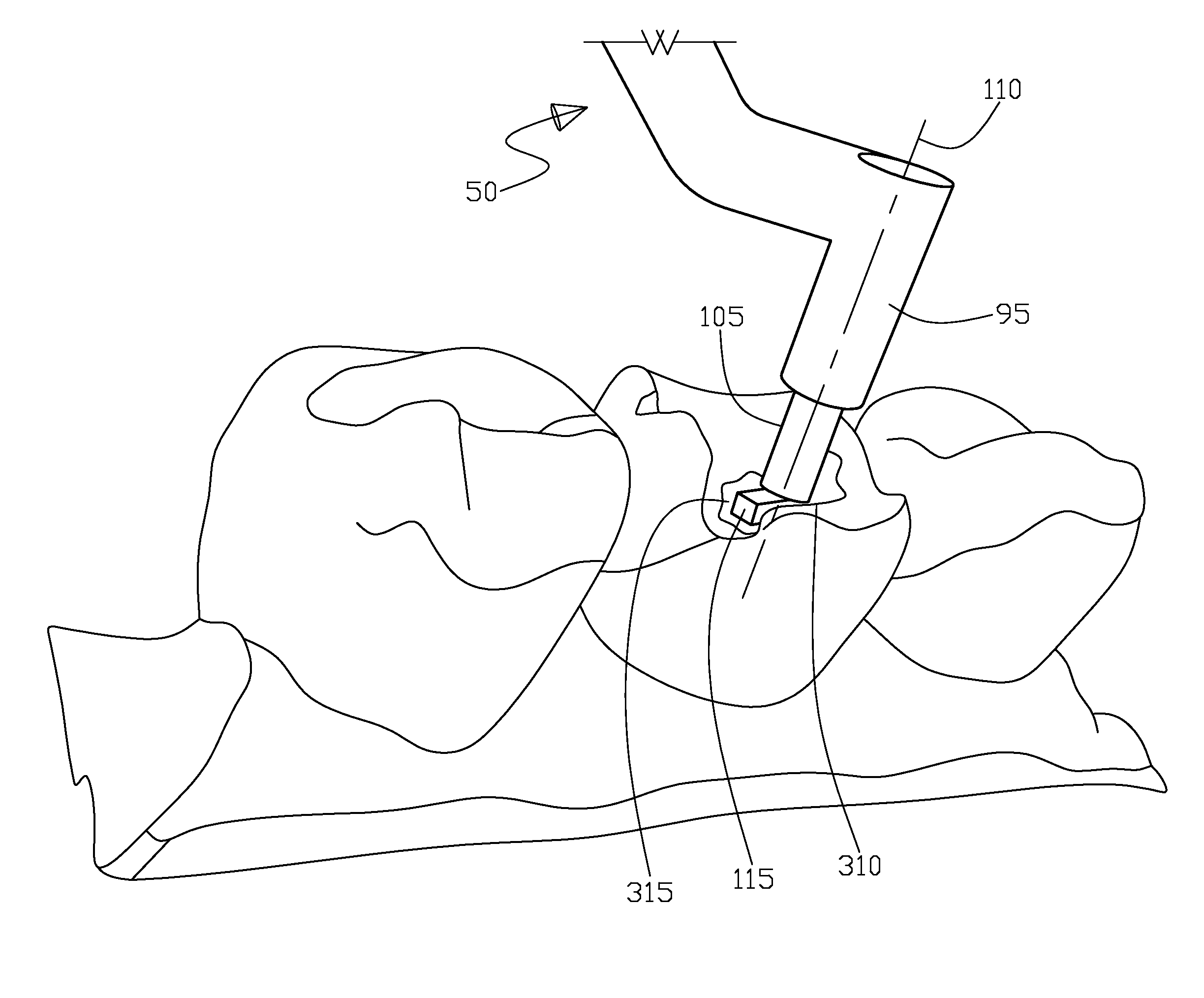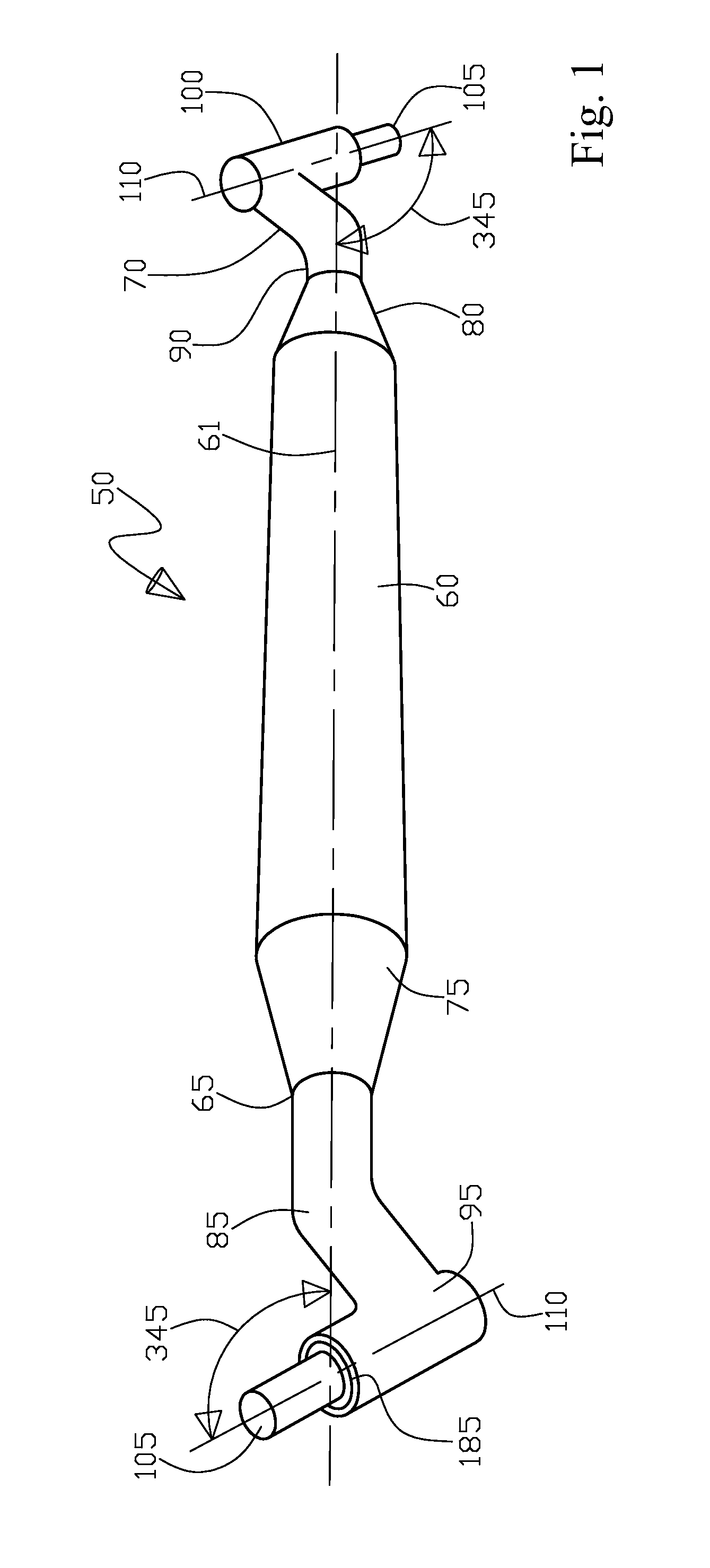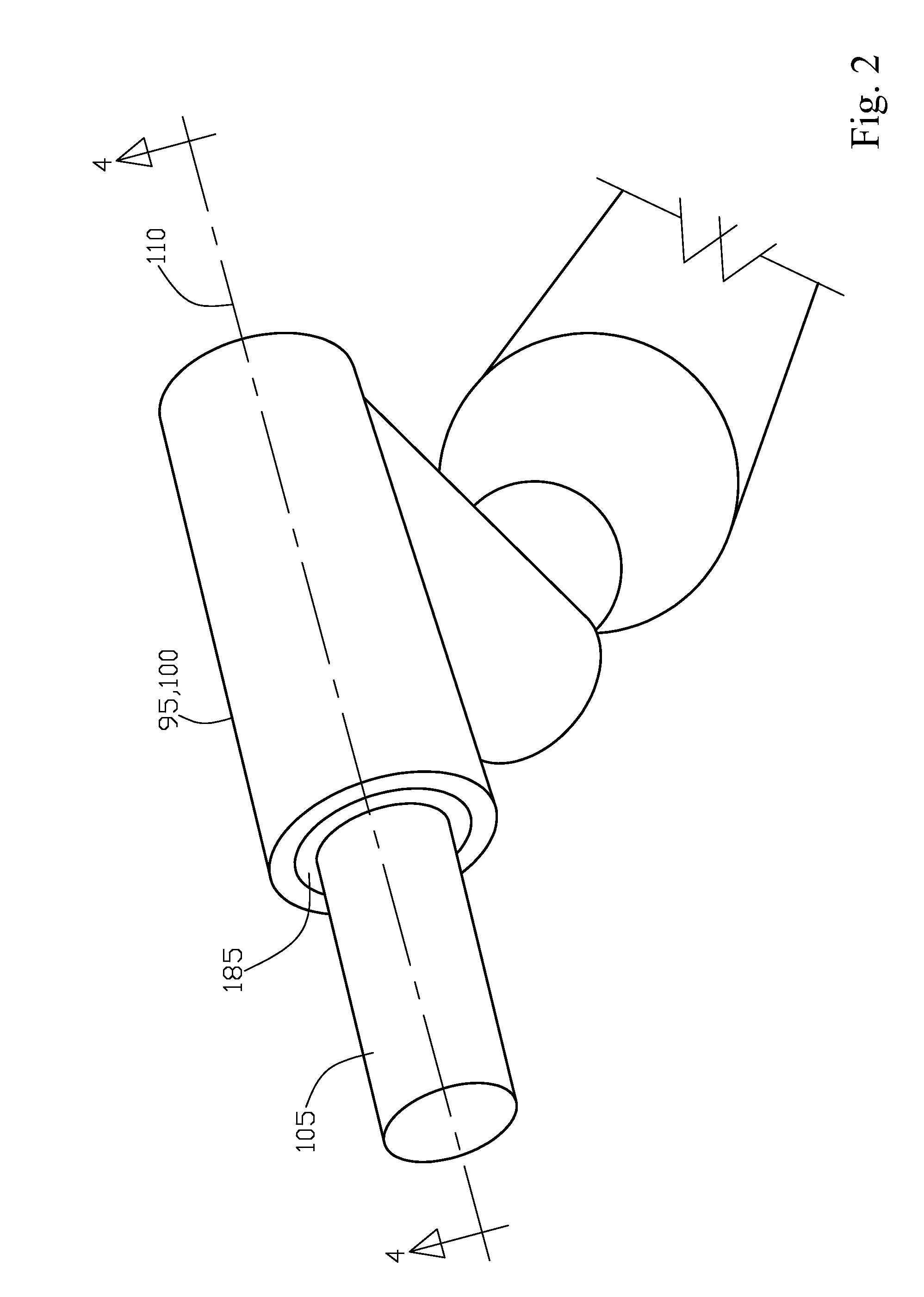Dental Tools for Photo-Curing of Dental Fillings
a technology of dental fillings and dental tools, which is applied in the field of filling cavities in teeth, can solve the problems of amalgam fillings permanently weakening the brittle crystalline structure of teeth, amalgam tends to discolor, composite fillings, etc., and achieves the effects of reducing the occurrence of weakening the bonding, reducing the voids in the filling, and safe manipulation
- Summary
- Abstract
- Description
- Claims
- Application Information
AI Technical Summary
Benefits of technology
Problems solved by technology
Method used
Image
Examples
embodiment 50
[0185]The dental tool 50 includes a central gripping member 60 with a first tool end portion 65 and an opposing second tool portion end 70. The central gripping member 60 can be formed of suitable materials, preferably a material that can be easily sterilized and that does not degrade under ultraviolet light. In the preferred embodiment 50, the central gripping member 60 is formed of a high strength plastic with knurled portions for ease of gripping. Alternatively, the gripping member 60 could be formed from stainless steel, aluminum or other suitable materials.
[0186]The dental tool 50, of this preferred embodiment, is illustrated with the first tool end portion 65 and the opposing second tool portion end 70. It is to be expressly understood that the tool could also include a single tool 105 end as well. The tool end 65 of this preferred embodiment includes an extended first end 75 with a reduced diameter. This reduced diameter portion 75 includes a first portion 85 that extends out...
embodiment 55
[0202]Looking in particular at FIGS. 23 through 27, as the alternative embodiment 55 is shown for the combined dental tool assembly 50 and the photo-curing light apparatus 250 further making this process of composite 315 photo-curing quicker, easier, and more efficient. As it is important to have the photo-curing light transmission 260 as close as possible to the composite material 315 and to minimize the “crowding” in the patient's 300 mouth 305 by having the light transmission 260 from light generating apparatus 250 travel therethrough the tool 55 itself or more specifically through the grip portion 60 allowing a one handed operation for the dentist 320 and more accurate photo-curing positioning. This results in minimizing any chance of voids 316 or porosity 316 in the cured composite 315 for a high quality filling with more structural integrity in the filled tooth, and in addition less time for the patient 300 to have tools in their mouth 305. Note that it is also preferable to h...
PUM
| Property | Measurement | Unit |
|---|---|---|
| Length | aaaaa | aaaaa |
| Fraction | aaaaa | aaaaa |
| Pressure | aaaaa | aaaaa |
Abstract
Description
Claims
Application Information
 Login to View More
Login to View More - R&D
- Intellectual Property
- Life Sciences
- Materials
- Tech Scout
- Unparalleled Data Quality
- Higher Quality Content
- 60% Fewer Hallucinations
Browse by: Latest US Patents, China's latest patents, Technical Efficacy Thesaurus, Application Domain, Technology Topic, Popular Technical Reports.
© 2025 PatSnap. All rights reserved.Legal|Privacy policy|Modern Slavery Act Transparency Statement|Sitemap|About US| Contact US: help@patsnap.com



